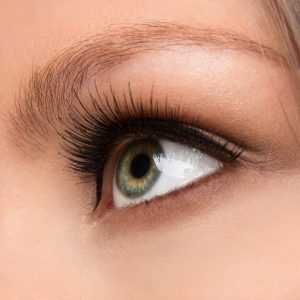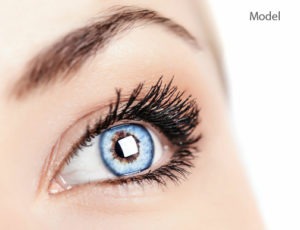 The journey to better vision or enhanced facial aesthetics through eyelid surgery can be filled with excitement and anticipation. But what comes after? The thought of reintegrating into your daily routine, especially returning to work, may feel a bit daunting. However, with the right understanding of the procedure, post-surgery recovery, personal healing process, and steps to speed up recovery, you’ll find that the transition back to the workplace can be smoother than you might think. Khan Eyelid and Facial Aesthetics, led by oculoplastic and reconstructive surgeon Dr. Tanya Khan, provides eyelid surgery to patients in Plano, Dallas, Austin, Texas, and surrounding locations.
The journey to better vision or enhanced facial aesthetics through eyelid surgery can be filled with excitement and anticipation. But what comes after? The thought of reintegrating into your daily routine, especially returning to work, may feel a bit daunting. However, with the right understanding of the procedure, post-surgery recovery, personal healing process, and steps to speed up recovery, you’ll find that the transition back to the workplace can be smoother than you might think. Khan Eyelid and Facial Aesthetics, led by oculoplastic and reconstructive surgeon Dr. Tanya Khan, provides eyelid surgery to patients in Plano, Dallas, Austin, Texas, and surrounding locations.
Understanding the Eyelid Surgery Procedure
Delving into the details of blepharoplasty, commonly known as eyelid surgery, can provide you with a clearer idea of what the procedure entails and what to expect post-operation. Essentially, this surgical process aims to refine the appearance of the upper or lower eyelids. It does this by eliminating or repositioning surplus skin, muscle, or fat that may be causing issues like sagging eyelids, wrinkles, or under-eye bags.
Think of this procedure as a delicate art form, balancing precision with a thorough understanding of facial aesthetics. Its goal is not just about removing what’s excessive, but also about harmonizing the eyelids with the rest of your facial features.
The duration of the operation, as well as potential side effects, should also be on your radar as you prepare for this journey. This foundational knowledge provides a groundwork for realistic expectations post-surgery. While every patient’s experience may vary, being well-informed about the procedure can better equip you to manage your recovery.
Remember, knowledge is power. By familiarizing yourself with the specifics of eyelid surgery, you are taking an important step towards a smoother, more confident journey towards better vision and enhanced aesthetic appeal.
The Initial Post-Surgery Recovery Period
The first week or two post-surgery is all about restoration. During this phase, it’s normal to notice some bruising and swelling, the typical calling cards of your body’s healing process. Fear not, these are simply signs of your body mending and reviving itself from the surgical procedure.
For managing these mild discomforts, ice packs can be your best friend, providing soothing relief. Additionally, simple over-the-counter pain medication may also be enlisted in your recovery arsenal, of course, under the guidance of your medical practitioner.
Remember, this period is all about recovery, and resting is just as vital to the healing process as any medication. Take it easy, be gentle with yourself, and let your body do what it does best: heal.
Evaluating Your Personal Healing Process
Each person’s healing journey after eyelid surgery is as unique as a thumbprint. There is no one-size-fits-all timeline when it comes to recovering from blepharoplasty. Your recuperation pace hinges on a myriad of factors such as your age, overall health status, and how your body reacts to the surgical procedure.
The diversity in healing times can range from a swift one week to a slower several weeks. It’s important to remember that neither is better or worse – they are simply different. Embrace your unique pace and resist the urge to compare your progress with others. Rushing your body’s natural healing process can do more harm than good, potentially delaying your recovery further.
Some people may find that they can return to work just one week after the procedure, while others may need more time to fully recuperate. When planning your return to work, it’s crucial to be flexible and understanding of your body’s needs. Trust that your body knows best when it comes to healing.
Always bear in mind that the journey back to normalcy after eyelid surgery isn’t a race, but rather a marathon. Giving your body the time it needs to heal not only aids in a smooth recovery but also contributes to the best possible surgical outcome. Stay patient with yourself throughout this process, and soon enough, you’ll be ready to reintegrate into the workplace. Remember, slow and steady often wins the race when it comes to surgical recovery.
Tips to Speed Up Recovery Time
Sure, your body’s recovery abilities are innate and automatic, but did you know there are things you can do to aid and potentially hasten the process? That’s right, your actions can influence the pace of your post-eyelid surgery recovery, and here’s how.
Rest is paramount. This isn’t the time to push yourself physically or mentally. Your body has been through an operation, and it needs time to recover. Create a calm, peaceful environment to rest in, and prioritize sleep. Your body does its best healing work while you snooze, so a good night’s sleep is incredibly beneficial.
Next up, nutrition. Just like a car needs quality fuel to run optimally, your body needs healthy food to support healing. Emphasize protein-rich foods, fruits, and veggies in your diet. They contain essential nutrients that can help your body repair itself.
Hydration is also key. Water aids in flushing out toxins and promoting healing. Aim to drink at least eight glasses of water a day. This can keep you hydrated and encourage faster healing.
Another tip to keep in mind is to avoid smoking and alcohol consumption. Both can interfere with the body’s natural healing process, potentially slowing recovery. If you’re a smoker or a regular drinker, you may want to discuss this with your medical practitioner for guidance.
A little movement can go a long way, too. Once your doctor gives you the go-ahead, gentle activities such as walking can help improve circulation and facilitate healing. Just remember not to push too hard. Listen to your body, and if you feel fatigued, rest.
Lastly, follow your doctor’s post-operative instructions to a tee. Whether it’s about medication, wound care, or follow-up visits, these directions are designed to aid your recovery. Ignoring them can delay healing and even lead to complications. When in doubt, reach out to your healthcare provider.
You see, while the body has a natural healing process, you have a role to play too. With these tips, you’ll be able to actively contribute to your own recovery and potentially speed up the process. Now, that’s power in your hands!
Returning to the Workplace
Transitioning back to the office after eyelid surgery can feel like a significant step, and indeed it is. You’ve journeyed through the process of the procedure itself, weathered the immediate recovery period, and patiently navigated your personal healing timeline. Now, it’s time to reintegrate into the workplace.
This is where your preparation, patience, and newly acquired understanding of your own body’s healing needs will come in handy. You’ve trusted your body to signal when it’s time to get back to work, and now you need to trust yourself to take things at the pace that’s right for you.
Communication is key in this phase. If your job involves physical labor or extended periods of intense concentration, it may be necessary to discuss some adjustments with your employer. This could mean starting off with reduced hours, or tasks that are less demanding. Remember, your wellbeing is paramount, and any understanding employer will accommodate your need to ease back into your normal routine.
The visual nature of eyelid surgery may also mean you might want to prepare for questions or comments from colleagues. This is entirely personal and depends on your comfort level. Whether you choose to explain your procedure or keep the details to yourself, be confident in your decision. After all, this journey to better vision and facial aesthetics was for you and nobody else.
Consider your reintegration into the workplace as the final stretch in your eyelid surgery journey. Be patient with yourself as you navigate this phase, just as you’ve been throughout your recovery. As you make this transition, remember the power you have to shape your own healing process, as you have done all along. You’ve got this! And soon, you’ll be fully back in the swing of things, bringing your enhanced vision and renewed confidence to everything you do. Welcome back to the workplace, and here’s to your continuing journey towards a healthier, more vibrant you.
Contact Khan Eyelid and Facial Aesthetics and Oculoplastic & Reconstructive Surgeon Dr. Tanya Khan Today to Schedule an Appointment
For more information about procedures and treatments at Khan Eyelid and Facial Aesthetics by Ophthalmic surgeon Dr. Tanya Khan. Click here to contact us.
Taking patients from in and around Dallas, Plano, Fort Worth, Grapevine, Garland, Mesquite, Carrollton, Irving, Frisco, Texas and more.


 When it comes to enhancing your visual appeal, the eyes have it. They’re one of the first things people notice about you. Therefore, it’s no surprise that eyelid surgeries, also known as blepharoplasties, have become increasingly popular. But what if you’re a contact lens wearer? Can you still wear contacts after eyelid surgery? Let’s explore this topic together. Khan Eyelid and Facial Aesthetics, led by oculoplastic and reconstructive surgeon
When it comes to enhancing your visual appeal, the eyes have it. They’re one of the first things people notice about you. Therefore, it’s no surprise that eyelid surgeries, also known as blepharoplasties, have become increasingly popular. But what if you’re a contact lens wearer? Can you still wear contacts after eyelid surgery? Let’s explore this topic together. Khan Eyelid and Facial Aesthetics, led by oculoplastic and reconstructive surgeon






Schedule a Consultation: 972-EYE-LIDS (393-5437)